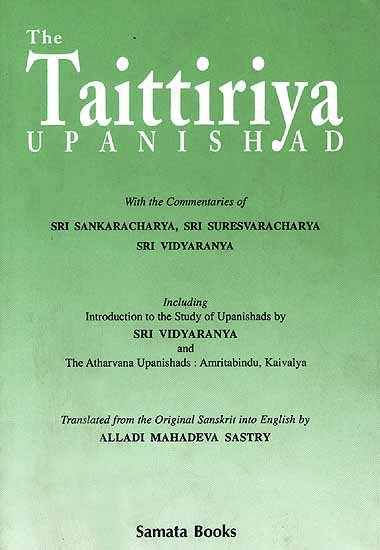Taittiriya Upanishad Bhashya Vartika
by R. Balasubramanian | 151,292 words | ISBN-10: 8185208115 | ISBN-13: 9788185208114
The English translation of Sureshvara’s Taittiriya Vartika, which is a commentary on Shankara’s Bhashya on the Taittiriya Upanishad. Taittiriya Vartika contains a further explanation of the words of Shankara-Acharya, the famous commentator who wrote many texts belonging to Advaita-Vedanta. Sureshvaracharya was his direct disciple and lived in the 9...
Verse 1.124
Sanskrit text and transliteration:
वियद्देहमिदं ब्रह्म वियत्सदृशमेव वा ।
मूर्तामूर्तस्वभावं च त्रैलोक्याद्यात्मतो भवेत् ॥ १२४ ॥
viyaddehamidaṃ brahma viyatsadṛśameva vā |
mūrtāmūrtasvabhāvaṃ ca trailokyādyātmato bhavet || 124 ||
English translation of verse 1.124:
This Brahman has space as its body or has a body similar to space. Since it is in the form of the three worlds, it has the gross and the subtle as its forms.
Notes:
Brahman that is being discussed here in the context of meditation has a body which is similar to ākāśa. Like ākāśa which is subtle and all-pervasive, the body of Brahman is subtle and all-pervasive.
The universe consists of five elements of which fire, water, and earth are gross (mūrtam or sat) and the remaining two, viz., space and air, are subtle (amūrtam or tyat). The word satyam refers to both the forms, the gross and the subtle, sat and tyat (sacca tyacceti satyam). Though forms are attributed to Brahman, it is really formless. The two forms of the universe, mūrta and amūrta, or sat and tyat, are superimposed on Brahman which is the essence (svarūpa) of all.
See the Bṛhadāraṇyaka Upaniṣad, II, iii, 2, for an account of the two forms of Brahman. In the course of his commentary on this text Śaṅkara says: “Brahman or the supreme Self has but two forms, through the superimposition of which by ignorance the formless supreme Brahman is defined or made conceivable.”
